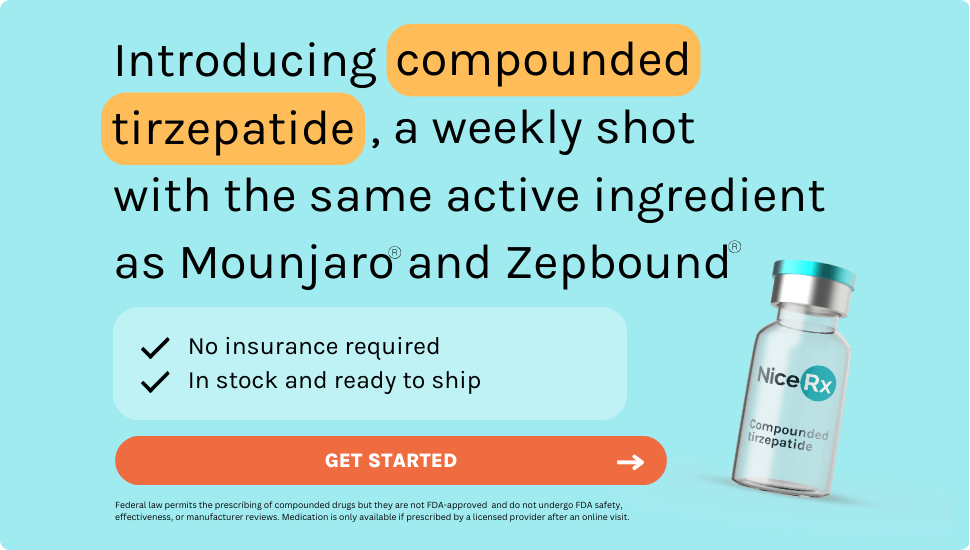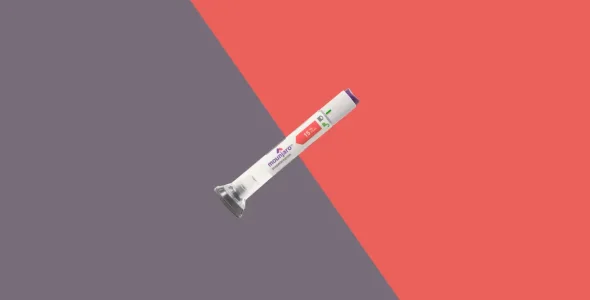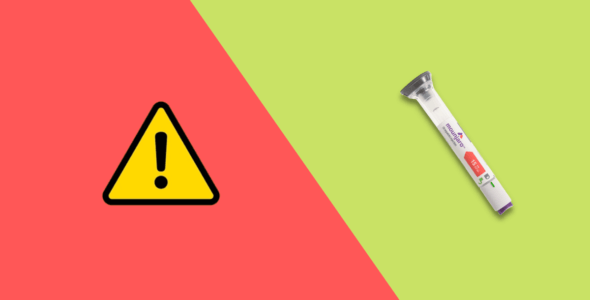Mounjaro Savings Card: Eligibility, benefits, and how to apply
Key highlights
- Mounjaro (tirzepatide) is FDA-approved for Type 2 diabetes but the cost is out of reach for some patients.
- Most insurance plans don’t cover Mounjaro for weight loss, so patients are left with high out-of-pocket costs.
- The manufacturer of Mounjaro, Eli Lilly, has a savings card program for people with private or commercial insurance.
- The Mounjaro Savings Card can help lower your prescription cost. If you’re eligible, you may pay as little as $25 for 1-3 months’ supply of Mounjaro.
- If Mounjaro is too expensive, your healthcare provider may recommend more affordable options such as compounded semaglutide or tirzepatide which contain the same active ingredients as Ozempic and Mounjaro respectively. Since there is no generic version of Mounjaro, other GLP-1 receptor agonists may be recommended.
Mounjaro (tirzepatide) is an FDA-approved medication to improve blood sugar levels in adults with Type 2 diabetes. It’s also prescribed off-label for weight loss combined with diet and exercise.
The cost of Mounjaro is $1,000-$1,200 a month without insurance. If you have to pay out of pocket, it’s over $12,000 a year.
Even if your insurance doesn’t cover Mounjaro or you don’t have insurance, there are ways to save on the medication with the Mounjaro Savings Card.
You can get a Mounjaro savings card if you have commercial or private insurance and a prescription for type 2 diabetes.
Read on to learn how to get Mounjaro for $25 a month or as low as possible.
How much does Mounjaro cost without insurance?
The list price of Mounjaro is $1,069.08 per fill according to the manufacturer, Eli Lilly. Without insurance, the retail price is $1,000-$1,200 or more per month. Each fill includes 4 prefilled pens which is a 28-day supply.
The list price isn’t the price you’ll pay at the pharmacy. For people paying out of pocket, the average retail price can vary based on many factors such as your location, the pharmacy you use, the reason your doctor prescribed it, and if you have insurance.
- Pharmacy: Prices are not regulated in the U.S., so each pharmacy sets its price.
- Location: The price can vary by location even if you’re buying from the same retailer. For example, a Walgreens on one block may be cheaper or more expensive than another Walgreens on the next block.
- Insurance coverage: If you have insurance coverage for Mounjaro, your out-of-pocket cost will be based on the copay and deductible in your plan.
- The reason you have prescribed the medication: Most insurance plans and the Mounjaro Savings Card program are limited to people who were prescribed Mounjaro for FDA-approved uses such as type 2 diabetes (not weight loss).
Many insurance plans including Medicare and Medicaid will cover Mounjaro if used for diabetes. However, your copay will vary by plan and will be higher until you meet your deductible. Medicare Part D plans cover many diabetes medications including Mounjaro.
- The Medicare Plan Finder tool can help you find a Medicare plan that covers your specific medications
- Medicaid coverage varies by state and plan. Some states may cover Mounjaro with no out-of-pocket cost with prior authorization.
- Healthcare professionals will work with your insurance provider to get approval for your medications by submitting a prior authorization. A prior authorization process may need to be completed before your insurance provider will cover Mounjaro.
- In some cases, your insurance provider may also require you to do step therapy which is a requirement for you to try and fail treatment with a different and less expensive medication first.
Is Mounjaro covered by insurance?
Coverage can vary by insurance plan. Many insurance plans including Medicare and Medicaid cover Mounjaro for type 2 diabetes.
Check if Mounjaro is covered by your insurance by checking your plan’s medication list (formulary) or contacting your insurance provider. Some plans may have restrictions like step therapy or prior authorization before covering Mounjaro. Employer-sponsored insurance may cover Mounjaro for type 2 diabetes, but most plans including Medicare and Medicaid plans won’t cover Mounjaro or Zepbound for weight loss or obesity due to the Medicare Prescription Drug, Improvement, and Modernization Act law that prohibits it. Contact your insurance provider for coverage details.
What is the Mounjaro Savings Card?
The Mounjaro savings card is a program offered by Eli Lilly that helps reduce the cost of the medication. If you qualify, you can use the card to get Mounjaro at a lower price, as low as $25/month. The savings card program is for people with commercial or private insurance and helps make the medication more affordable.
If you qualify for the Mounjaro Savings Card, you can pay as low as $25 for a 1-month or 3-month prescription. You need to have commercial insurance and a prescription for an FDA-approved use such as type 2 diabetes.
To qualify for the Mounjaro Savings Card, you must meet certain criteria. First, you must be prescribed Mounjaro for an FDA-approved use, consistent with the medication’s labeling. You must also be enrolled in a private or commercial drug insurance plan. You cannot be enrolled in any state, federal, or government-funded healthcare program, such as Medicaid, Medicare, Medicare Part D, Medicare Advantage, Medigap, DoD, VA, TRICARE, or any state prescription drug assistance program. You must also be a resident of the United States or Puerto Rico and be at least 18 years old.
The Mounjaro savings card is a great tool to help manage the cost of diabetes treatment. It can reduce the amount you pay for Mounjaro, making the medication more affordable if your insurance doesn’t cover the full cost of the medication. By using the savings card, you can save on your prescription, stay on track with your treatment plan, and manage your diabetes.
Eligibility criteria for the Mounjaro Savings Card
To qualify for the Mounjaro Savings Card, you need to meet these requirements:
- Have a private or commercial insurance plan
- Have a prescription for Mounjaro that follows FDA-approved guidelines (type 2 diabetes)
- Be a legal resident of the U.S. or Puerto Rico
- Be at least 18 years old
- Not be enrolled in any government-funded programs like Medicare, Medicaid, Medicare Advantage, Medigap, DoD, VA or TRICARE/CHAMPUS, or any state prescription drug assistance program
Get your Mounjaro savings card by filling out a short form online and choose how you want to receive it: download the card, have it emailed to you, or add it to your mobile wallet.
Eligibility terms
If you have commercial insurance that covers Mounjaro, you can pay as low as $25 for a 1-month, 2-month, or 3-month prescription. You can use the card for up to 13 fills per calendar year with a total annual savings limit of $1,950.
Mounjaro Savings Card requirements are subject to change so check the website for updates. If you qualify, here’s how much you can save with the program:
- Maximum savings of $150 for a 1-month prescription (28-day supply: 4 pens)
- Maximum savings of $300 for a 2-month prescription (56-day supply: 8 pens)
- Maximum savings of $450 for a 3-month prescription (84-day supply: 12 pens)
- The card is valid through 12/31/2025 for insured patients and 06/30/2025 for uninsured patients.
- Lilly can change or terminate the card at any time without notice for any reason.
If your private or commercial insurance doesn’t cover Mounjaro, you can still use the savings card which offers up to $463 savings on a 1 month prescription with a maximum savings of up to $3,241 per calendar year. In this case, the card can be used for up to 7 fills per calendar year.
Additional terms
You cannot use the Mounjaro Savings Card if you are part of an alternate funding program (AFP) where insurance coverage or patient costs vary based on the availability of manufacturer co-pay programs. If you are part of such a program, you are not eligible for the Mounjaro Savings Card.
You are also responsible for any taxes, fees, or amounts that exceed the maximum savings limits. The card cannot be used with other discount programs or insurance benefits and is non-transferable. If you enroll in any state or federal healthcare program, you must stop using the card as eligibility will end.
Expiration and changes
The Mounjaro Savings Card expires on December 31, 2025, for patients with commercial insurance that covers Mounjaro and on June 30, 2025, for patients whose insurance doesn’t cover Mounjaro. Lilly reserves the right to change, amend, or terminate the eligibility criteria and terms of the card at any time.
How do I get Mounjaro for $25 a month for weight loss?
The Mounjaro savings card is not available to those who were prescribed the medication for chronic weight management as Mounjaro is not FDA-approved for weight loss.
If you are using the medication off-label for weight loss, you can ask your healthcare provider about switching to Zepbound and applying for the Zepbound Savings Card program. Zepbound contains the same active ingredient as Mounjaro, tirzepatide, and is made by the same company, Eli Lilly.
Patients with private or commercial insurance coverage for Zepbound may pay as low as $25 for a 1-month or 3-month supply of Zepbound with the following limitations:
- Maximum monthly savings of up to $150 for a 1-month prescription
- Maximum monthly savings of up to $300 for a 2-month prescription
- Maximum monthly savings of up to $450 for a 3-month prescription
- Maximum annual savings of up to $1,950 per calendar year
- Prescription can be filled up to 13 times per calendar year
Patients with private or commercial insurance coverage without coverage for Zepbound may pay as low as $525 for a 1-month supply of Zepbound with the following limitations:
- Maximum savings of up to $469 for a 1-month prescription
- Maximum annual savings of up to $3,283 per calendar year
- Prescription can be filled up to 7 times per calendar year
Terms and conditions for the Zepbound Savings Card program
- You have a prescription from a licensed U.S. prescriber according to the FDA-approved product labeling (obesity, overweight, or chronic sleep apnea)
- You are enrolled in a private or commercial drug insurance plan
- You are not enrolled in government insurance plans such as Medicare, Medicaid, Medicare Part D, Medicare Advantage, Medigap, VA, DoD, TRICARE/CHAMPUS, or any state drug assistance program
- You are a legal resident of the United States or Puerto Rico
- You are at least 18 years of age.
Once approved for the savings card, inform the pharmacist of your Savings Card when purchasing the medication. If eligible, the card’s benefits should be applied immediately, providing you with instant savings on the medication.
For those ineligible, exploring other financial assistance programs, alternative medications, or generic options, can potentially help you save money.
How the Mounjaro Savings Card works
The Mounjaro Savings Card reduces the amount you pay for the medication. It lowers your copay, so you pay less out of pocket for your prescriptions. Savings vary based on your insurance and eligibility.
Typical savings and out-of-pocket costs
If you qualify, you could pay as low as $25 for a 1, 2, or 3 month supply of Mounjaro. Savings will vary based on your insurance. For those with private or commercial insurance that doesn’t cover Zepbound, it’s limited to savings up to $463 per month and $3,241 per year.
How to use the card at your pharmacy.
Show the Mounjaro Savings Card to the pharmacist at a participating pharmacy when you pick up your prescription. They will apply the savings to your out-of-pocket cost.
Does the card pay the full cost of the medication?
No, the Mounjaro Savings Card doesn’t pay the full cost of the medication. It’s a discount on your prescription cost, you will still pay a lower cost based on your insurance and eligibility.
What happens when the savings card expires?
Once the card expires you can no longer use it for discounts. You’ll need to check if you qualify for a new card or other assistance programs to help with lowering the cost of Mounjaro.
Are there usage limits per month?
Yes, there are limits on how many times you can use the card per month. Typically, 1 fill per month and up to 13 fills per calendar year with insurance coverage for Mounjaro, or up to 7 fills per year without insurance coverage for Mounjaro.
How to apply for the Mounjaro savings card
You will need to register on the website and complete the application for the Mounjaro Savings Card online on the Mounjaro Price Guide page. Fill out the enrollment form.
Apply now for the Mounjaro Savings Card on the Eli Lilly website or call 1‑833‑807‑6576 if you have questions or need help.
To see if you are eligible for the Mounjaro savings card, follow these steps:
- Check your insurance: You must be enrolled in a private or commercial drug insurance plan, and not be enrolled in any federal or state sponsored plans like Medicaid, Medicare, or any government-funded program.
- Prescription: You have a Mounjaro prescription for a condition that is FDA-approved.
- Age and location: You are at least 18 years old and a resident of the U.S. or Puerto Rico.
- Online form: Fill out a quick form on the Mounjaro Savings Card website to check your eligibility.
- Verification: The website will tell you if you qualify.
Once approved, you will receive your card from Eli Lilly. You can download it, have it emailed to you, or add it to your mobile wallet. Or you can choose to have a physical copy sent to you.
Once you receive your card you can start using it at the pharmacy to save on Mounjaro. Show the card when you fill out your prescription to apply the savings.
See the terms and conditions for the Mounjaro Savings Card on the website.
How can I get Mounjaro for free?
There are currently no patient assistance programs offered by the manufacturer, Lilly, that offer free Mounjaro.
You may be able to get Mounjaro for free through your insurance company if it’s on the formulary and you’ve met your deductible and out-of-pocket limits. Contact your insurance company for coverage details, copays, and deductibles.
How to save on Mounjaro
Mounjaro is only available as a brand name medication and there are no generics yet. However, there are still ways to save.
Keep reading to learn more about how you can save on Mounjaro with or without insurance. If you have an insurance plan that covers Mounjaro for your health condition, you’ll pay less. With or without insurance, savings programs and manufacturer coupons can help make Mounjaro more affordable.
Check your prescription coverage
If you have insurance, check the formulary (list of covered drugs) or contact your insurance company to see if Mounjaro is covered for your condition. All insurance plans including Medicare and Medicaid have a formulary which is a list of covered drugs in a tier system. Higher tiers have higher out-of-pocket costs than lower tiers. As Mounjaro is a brand name drug, it may be on a higher tier or not covered. If it’s not covered, you can submit an exception request with your provider or consider switching to a different plan during the next open enrollment period.
If Mounjaro is covered by your insurance, ask your insurance company what the copay and deductible are so you know how much you’ll be out of pocket. If Mounjaro is covered by your insurance, you can reduce your out-of-pocket costs by using the Mounjaro Savings Card. If it’s not covered, you can submit an exception request with the help of your provider.
If you’re using Mounjaro for weight loss, it’s unlikely your insurance company will cover it when prescribed off-label. Ask your insurance company if they cover other weight loss drugs like Wegovy (semaglutide) or Zepbound (tirzepatide). If so, talk to your provider about switching to another GLP-1 weight loss drug that is covered by your insurance plan.
Mounjaro Savings Card
If you have private or commercial insurance that covers Mounjaro, do not have government insurance (e.g. Medicare, Medicaid, Medigap, DoD, VA, or any other state or federal health insurance program), are a U.S. or U.S. territories resident, have been prescribed Mounjaro for one of its FDA approved indications (type 2 diabetes) you may be eligible to pay $25 for a 1, 2 or 3 month supply of Mounjaro.
The Mounjaro savings card program is valid for up to 24 months with certain eligibility requirements and has a maximum savings of $150 for 28 days, $300 for 56 days, and $450 for 84 days.
Apply for the Mounjaro Savings Card to see if you qualify for the program.
Medicare savings
Medicare Extra Help is a subsidy for low-income individuals with Medicare Part D coverage which helps lower Part D costs including copays for medications like Mounjaro. If you qualify for Medicare Extra Help in 2024, you could pay as little as $11.20 for brand-name drugs or 15% of your copay or coinsurance, whichever is less.
Medicare also has a program, Senior Savings Models, to reduce the cost of insulin for diabetics to $35 a month. Mounjaro is not insulin and is not covered by this program, but some diabetics take Mounjaro and insulin together.
Compare pharmacy prices
Your local pharmacy may not have the lowest price for all medications including Mounjaro. Prices vary by pharmacy across the U.S. and it’s a good idea to compare prices across multiple pharmacies to get the best price on your medication.
Mounjaro coupons and discount cards
You can get Mounjaro coupons or Mounjaro prescription discount cards through prescription drug savings companies like GoodRx and SingleCare which offer up to 80% off. These coupons work at pharmacies near you without insurance. Prices vary by quantity, pharmacy, location, and medication form.
90-day refills
Some mail-order pharmacies offer discounts on a 3-month supply of medications. Ordering a 90-day supply at a time to your home can also be more convenient. Eligibility may vary by your insurance plan’s quantity limits.
Ask your healthcare provider about free samples
You can ask your healthcare provider about free samples which are usually provided when a patient starts treatment. Pharmaceutical companies provide doctors and clinics with free samples of their medications to help patients get started on treatment. However, this is not a long-term solution as samples are usually provided for up to one month.
Talk to your healthcare provider about Mounjaro alternatives
If your insurance doesn’t cover Mounjaro, you can talk to your healthcare provider for medical advice about switching to a cheaper Mounjaro alternative.
Mounjaro is a GIP and GLP-1 receptor agonist used to control blood glucose levels in people with type 2 diabetes. Other GLP-1s on the market may be cheaper than Mounjaro or covered by your insurance. The price you pay for each medication varies by pharmacy, location, quantity, and insurance.
Is there a cheaper Mounjaro alternative?
If you can’t get Mounjaro at a price you can afford, you can talk to your healthcare provider about Mounjaro alternatives including:
Compounded semaglutide and compounded tirzepatide
Compounded medications are made by licensed compounding pharmacies using the same active ingredients as the brand-name drug.
Given the current FDA shortages, you can get compounded semaglutide (the same active ingredient as Ozempic and Wegovy) and compounded tirzepatide (the same active ingredient as Mounjaro and Zepbound). No insurance is required.
Ozempic (semaglutide)
Ozempic is a brand-name injectable medication for type 2 diabetes manufactured by Novo Nordisk. Ozempic activates GLP-1 pathways to control blood sugar in people with type 2 diabetes and weight loss.
Novo Nordisk has a savings card program for Ozempic. If eligible, you can pay as low as $25/month.
Zepbound (tirzepatide)
Zepbound is another brand-name GLP-1/GIP injectable medication with the same active ingredient as Mounjaro, tirzepatide, and is approved for chronic weight management in adults who are obese or overweight with at least one weight related condition. It was also recently approved for sleep apnea in people with obesity. If you were prescribed weight loss medication and have insurance coverage for Zepbound, it could be a good option for you.
Eli Lilly has a savings card program for Zepbound. If eligible, you can pay as low as $25/month.
Wegovy (semaglutide)
With the same active ingredient as Ozempic, semaglutide, Wegovy is FDA-approved for chronic weight management and to reduce the risk of major adverse cardiovascular events. Although the list price is higher than Ozempic, it could be an alternative to Ozempic if you were prescribed weight loss medication and have insurance coverage for Wegovy.
Novo Nordisk has a savings card program for Wegovy. If eligible, you could get Wegovy for as low as $0/month.
Saxenda (liraglutide)
Saxenda is another GLP-1 medication with the same active ingredient as Victoza, liraglutide. It’s used for chronic weight management in combination with a reduced-calorie diet and increased physical activity in adults with obesity or overweight.
Novo Nordisk has a savings card program for Saxenda. If eligible, you could get Wegovy for as low as $25/month.
Victoza (liraglutide)
Victoza is a prescription injectable medication for blood sugar control in people with type 2 diabetes and weight loss.
Victoza is covered by Novo Nordisk’s Patient Assistance Program. Novo Nordisk does not have a savings card program for Victoza.
Rybelsus (semaglutide)
Rybelsus is another brand-name GLP-1 medication with the same active ingredient as Wegovy and Ozempic, semaglutide. It’s the oral version of semaglutide, FDA-approved for blood sugar control in adults with type 2 diabetes.
Like Ozempic, Rybelsus is covered by the Novo Nordisk PAP for eligible patients with type 2 diabetes. Novo Nordisk also has a savings program that provides access to Rybelsus to eligible patients for as low as $10/month.
Byetta (exenatide) and BYDUREON BCise (exenatide extended-release)
Byetta (exenatide) is an injectable diabetes medication for blood sugar control. It’s injected twice a day.
Byetta (exenatide extended-release) is injected once a week.
AstraZeneca is the manufacturer of both medications and has a savings program for BYDUREON BCise. If eligible, you could pay as low as $0 for BYDUREON BCise.
Trulicity (dulaglutide)
Trulicity is a once-weekly injectable prescription medication with the active ingredient dulaglutide. It’s FDA-approved for blood sugar control in people with type 2 diabetes.
Eli Lilly has a Trulicity savings program and eligible patients can get 12 pens (3-month supply) for as low as $25.
Bottom line
Mounjaro is an expensive medication that costs $1,000 to $1,200 or more per month without insurance. Insurance coverage is more likely if you were prescribed Mounjaro for its FDA-approved indication, type 2 diabetes.
If you have private or commercial insurance, you could pay as low as $25 with the Mounjaro Savings Card. If you were prescribed the medication for weight loss, you should check if your insurance covers other GLP-1 weight loss medications like Wegovy or Zepbound which also have savings card programs.
Check if you qualify for the Mounjaro savings card on Eli Lilly’s website.
You can also speak with your healthcare provider about other options including alternative medications that may be less expensive or covered by your insurance plan.





